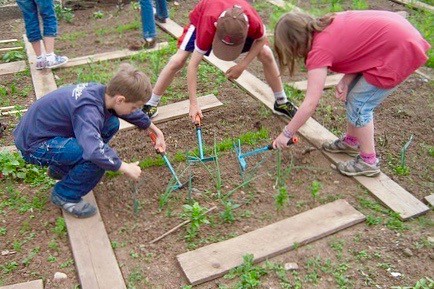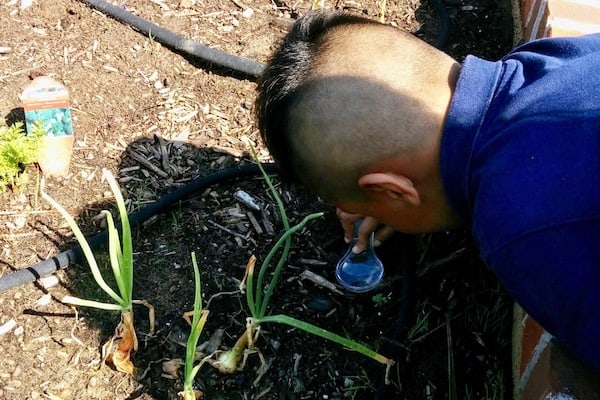TEXAS
How to Grow a Garden
By Wendy Kelly
North Texas, United States
Any experienced gardener will tell you never to stop learning. Don’t wait till you think you “know it all” to begin. Some guidelines are helpful, and plants do have certain needs such as food, water, and shelter.
While it’s a nice idea to start off big, think small first. Nature is complicated, and it’s hard to find the right balance. So to avoid getting frustrated, begin with one or two vegetable beds at first.
Building the Bed
Soil in our North Texas region is hard to deal with. While you can amend the soil with minerals, a much easier and more economic solution is to build a raised bed. At Out Teach, formerly known as REAL School Gardens, our beds measure four feet (ft.) by eight ft. and are built at a depth of nine inches. We have found that size to permit a fruitful amount of plants while keeping the soil deep enough to hold moisture through our hot Texas summers.
Here are a few tips:
- Your beds should be placed in an area that receives six hours of sunlight.
- You might want to consider their proximity to a water source and their protection from extreme winds.
- If you walk by your beds everyday, you will notice any problems before they start.
- Keep an eye on weeds, water, and pests.
Strengthening the Soil
Soil will rarely have enough nutrients on its own, so add an organic mixture of minerals, sand, clay and fertilizer. Organic fertilizers can be purchased at nurseries and should have enough nitrogen and phosphorus in them. Make sure to fertilize plants as soon as you plant them and after they fruit.
Managing the Mulch
Mulching around your plants with wood chips or hay will help hold in moisture. Make sure your mulch doesn’t touch the stem of the plant or it will rot.
Growing the right plants at the right time is very important. Wherever you live, it is important to consult a local planting calendar.
Have a suggestion for this story? We’d love for you to submit it!


Blank
Blank
Math Resources
- If a raised bed measures 4 ft. by 8 ft., what is its area?
- A vegetable bed has an area of 60 square meters. If its perimeter is 32 meters, what is its length and width?
- If you wanted to determine the area and perimeter of a bed that was 5 ft. long and 3 ft. wide, what would you do?
- When placing 48 ft. of fencing around a vegetable bed to keep out rabbits, you know the length is 14 ft.. How could you determine the width?
- If three pounds of fertilizer covers 100 sq. ft., approximately how much will you need to cover a flower bed that is 5 ft. wide and 60 ft. long?
Extension Question
Why is knowing where your food comes from important? How might understanding where it’s grown, how it’s made, or who produces it affect your health, the environment, and the people involved? What choices could you make differently if you knew more about the journey your food takes to reach your plate?
Explore Further
- How-to hints on planting a school garden
- Let’s Move campaign on school gardens
- School gardens and math activities
Share Your Story
Write your own Global Math Story and send it to us!
Sorry, the comment form is closed at this time.